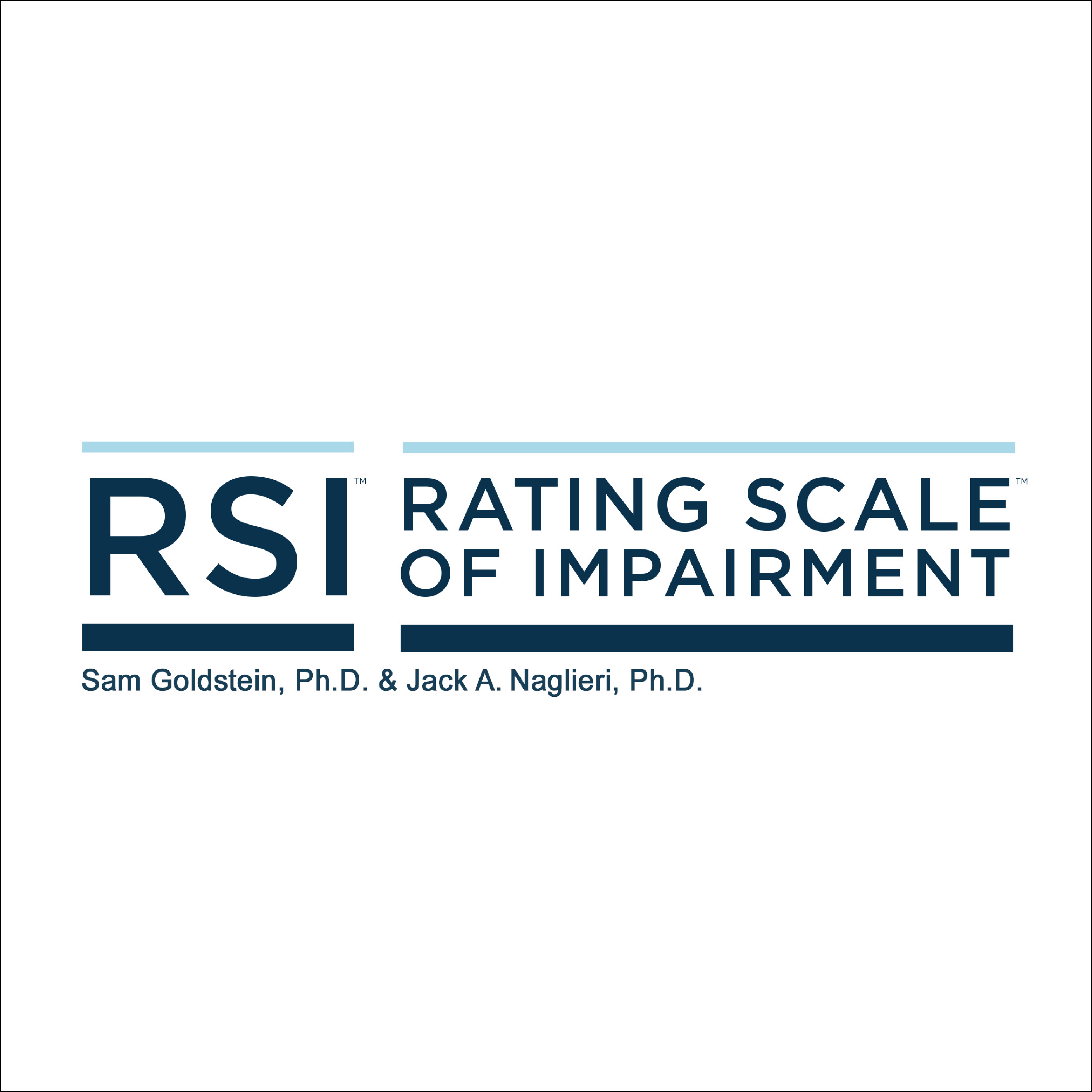
RSI™
Rating Scale of Impairment™
Filters
Authored by Sam Goldstein, Ph.D. and Jack A. Naglieri, Ph.D., the Rating Scale of Impairment™ (RSI™) is a multi-informant behavior rating scale designed to assess impairment in children and youth ages 5 to 18. When used in combination with symptom measures, the RSI adds impairment information that can help complete the diagnostic picture. It also helps to highlight where functional impairment is most prominent so that interventions can be more effectively targeted. When used in group settings, the RSI can help identify those who require additional assessment or measure the effectiveness of intervention programs.
Age
- 5 to 18
Administration Type
- Parent
- Teacher
Administration Time
- 5 to 10 minutes
Number of Items
- Parent Form (5-12 years): 41
- Parent Form (13-18 years): 49
- Teacher Form (5-12 years): 29
- Teacher Form (13-18 years): 29
Qualification Level
- B
Format(s)
- Online
- Handscored
Reading Level
- 6th Grade
- Determine if DSM-5/ICD-10 impairment criteria for a diagnosis are met by identifying specific areas where functioning is impacted
- Develop targeted treatment plans and monitor progress by focusing on areas with the greatest impairment
- Determine if service eligibility requirements are met with IDEA compatibility
- Assess impairment more clearly by separating functional limitations from symptoms
- Align with the World Health Organization's (WHO) functional impairment framework with scales that represent domains identified in the WHO's International Classification of Functioning, Disability, and Health (ICF)
Comparative Reports combine the results of different raters to provide an overview of an individual's scores from a multi-rater perspective. This highlights potentially important inter-rater differences in scores.
Interpretive Reports provide detailed information about scores from a single administration, presented both numerically and graphically. An individual's scores are compared to those in the normative sample and elevations at the scale and subscale level are indicated.
Progress Monitoring and Treatment Effectiveness Reports combine results from up to four ratings over time by the same rater.
Reliability
Internal consistency refers to the extent to which all items on the same scale consistently measure the same content. The RSI Scales and the Total Score were found to demonstrate strong levels of internal consistency. Test-retest reliability refers to the stability of test scores when an assessment is administered on two or more occasions. Partial correlations were conducted to assess the test-retest reliability of the RSI Scales and Total Score over a 2- to 4-week interval (controlling for age and gender), and excellent test-retest reliability was found.
Validity
Discriminative validity pertains to an instrument’s ability to distinguish between relevant participant groups. Assuming that functional impairment should increase as the number of diagnoses increases, the RSI should be able to distinguish individuals with a greater number of diagnoses from individuals with fewer or no diagnoses. ANCOVAs were conducted to compare the RSI scores of children/youth from the general population with clinical cases categorized according to their number of diagnosed disorders (i.e., one diagnosis, two to three diagnoses, and four or more diagnoses). Significant main effects of number of diagnoses were observed for all scores (p < .01) except for Mobility on the RSI (5–12 Years) Teacher Form and the RSI (13–18 Years) Teacher Form (p = .036 and .017, respectively).
An examination of Cohen’s d effect size ratios indicate that differences from the general population became progressively larger as the number of diagnoses increased. Specifically, across scores on all RSI Forms, effect sizes were generally small when comparing the general population to clinical cases with one diagnosis (median Cohen’s d = 0.45), medium when comparing the general population to clinical cases with two to three diagnoses (median Cohen’s d = 0.61), and strong when comparing the general population to clinical cases with four or more diagnoses (median Cohen’s d = 1.02). These results confirm the expectation that as the number of diagnoses increases, the level of impairment as assessed by the RSI also increases.
The RSI has a large normative sample with approximately 2,800 ratings collected—800 ratings for each of the RSI (5–12 Years) Parent and Teacher forms, and 600 ratings for each of the RSI (13–18 Years) Parent and Teacher forms. Normative samples were evenly balanced in terms of age and gender and distributions of race/ethnicity were stratified by geographic region and parental education, so that the overall proportions of these demographic variables matched within 1% of the 2010 U.S. Census targets. Additionally, to better reflect the U.S. general population, between 11.6 to 11.8% of the normative samples included ratings of children/youth who had a clinical diagnosis or were eligible to receive special educational services according to the Individuals with Disabilities Education Act (IDEA) criteria.


